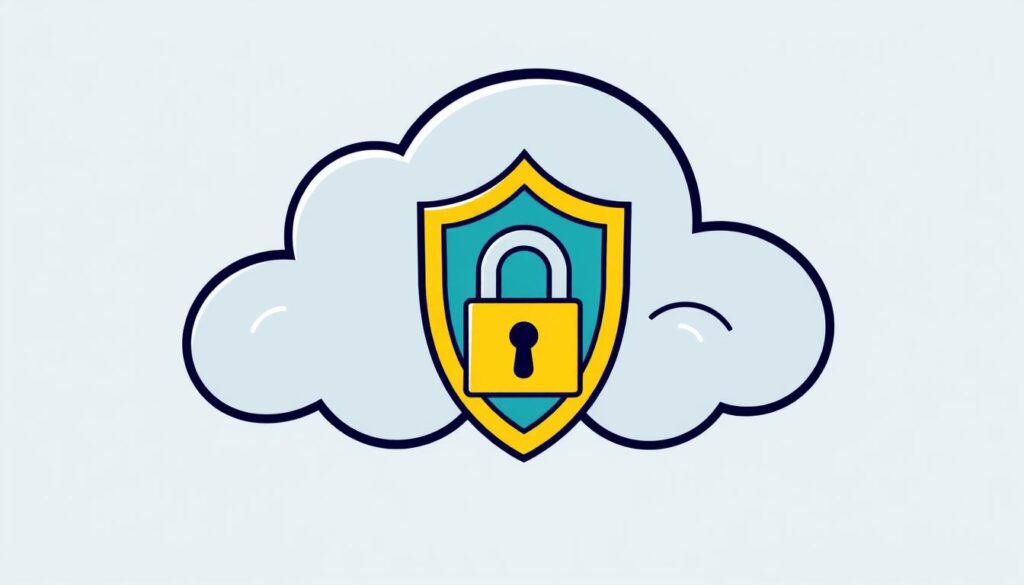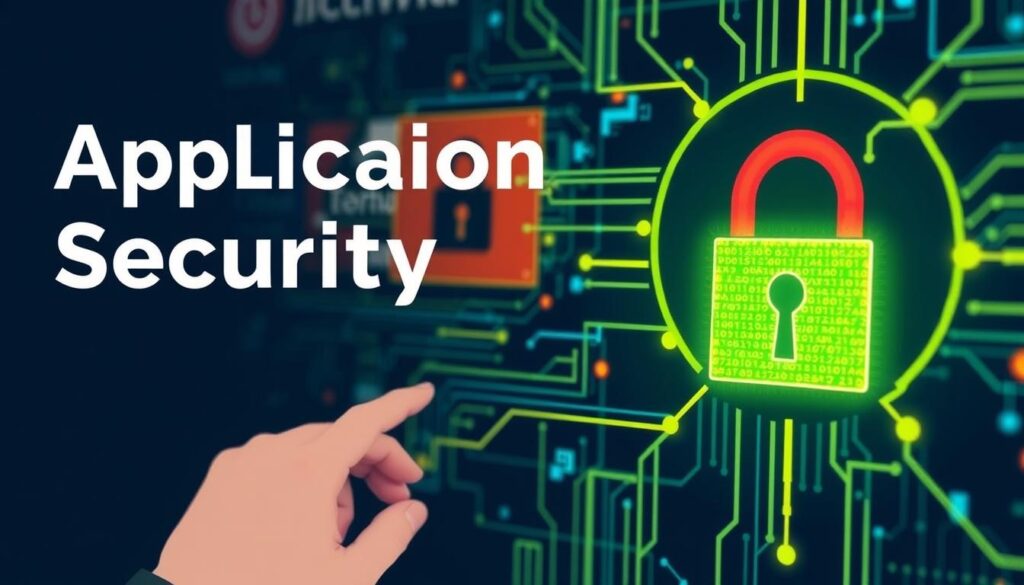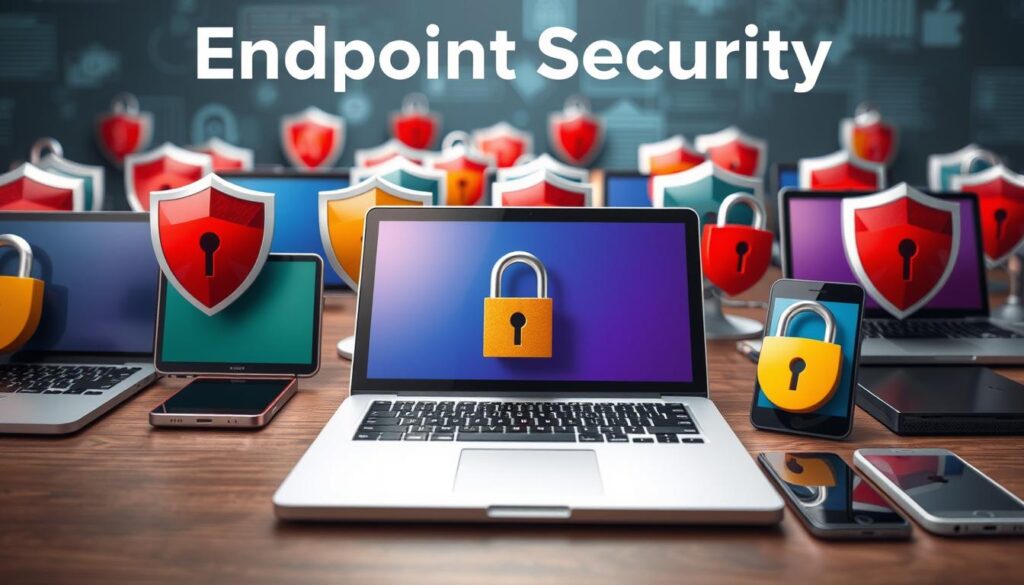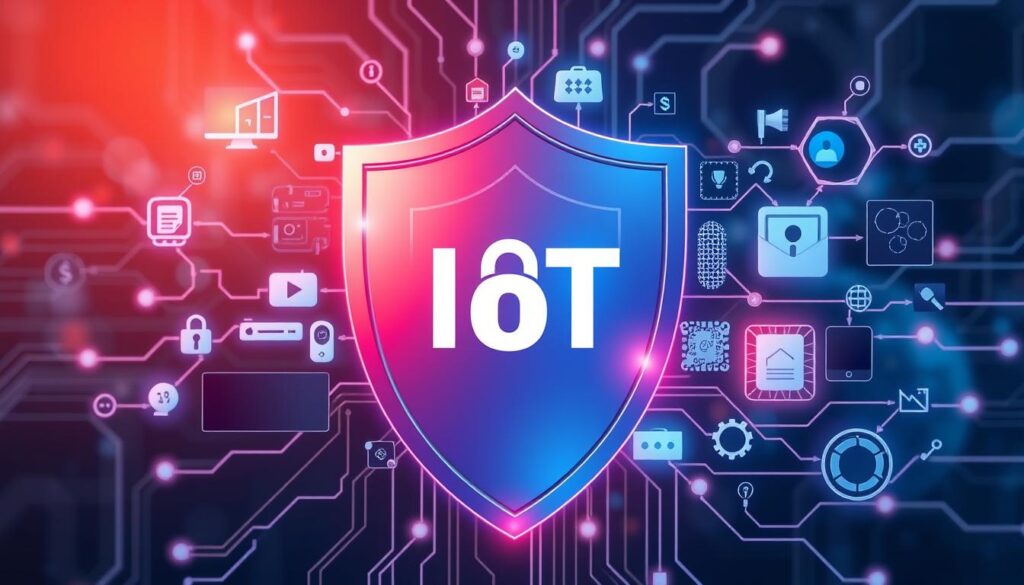In today’s digital landscape, cybersecurity is more critical than ever. Did you know that in 2023, the global cost of cybercrime is projected to reach $10.5 trillion?
This staggering figure highlights the importance of robust security measures to protect against cyber threats and attacks. As technology advances, so do the tactics of malicious attackers, making it essential for individuals and organizations to stay ahead of these threats.
Understanding the different types of cybersecurity is crucial for comprehensive protection. This guide will walk you through the six fundamental types of cybersecurity, explaining how they work together to safeguard your digital infrastructure.
Key Takeaways
- Discover the six fundamental types of cybersecurity that form the backbone of modern digital protection strategies.
- Learn how each type of cybersecurity works to protect different aspects of your digital infrastructure.
- Understand why implementing multiple layers of security is essential for comprehensive protection.
- Gain insights into how these six cybersecurity types work together to create a robust security posture.
- Break down complex cybersecurity concepts into easy-to-understand explanations.
Understanding Cybersecurity and Its Importance
As technology continues to advance, the importance of robust cybersecurity measures cannot be overstated. In today’s digital landscape, as technology evolves, so do cyber threats, making cybersecurity more critical than ever. Thus, you need a comprehensive approach to protect sensitive information from hackers, malware, and other online threats.
What Is Cybersecurity?
Cybersecurity refers to the practices and technologies designed to protect digital information, networks, and systems from unauthorized access, use, disclosure, disruption, modification, or destruction. This includes measures to prevent data breaches and cyber attacks that can compromise sensitive information.
Cybersecurity involves a range of techniques, including firewalls, encryption, and intrusion detection systems, to safeguard an organization’s digital assets. By implementing robust security measures, individuals and organizations can protect themselves against various cyber threats.
Why Cybersecurity Matters in Today’s Digital Landscape
In today’s interconnected world, cybersecurity has become more crucial than ever. As our dependence on digital systems continues to grow exponentially, the potential impact of cyber attacks also increases. Here are some key reasons why cybersecurity matters:
- The real-world consequences of cybersecurity failures can be severe, ranging from massive data breaches affecting millions to targeted attacks that can cripple critical infrastructure.
- The financial implications of cyber attacks are significant, with the average cost of a data breach reaching millions of dollars for organizations of all sizes.
- Cybersecurity threats have evolved from simple viruses to sophisticated, state-sponsored attacks that can evade traditional security measures.
- Proper cybersecurity measures protect not just your information, but your reputation, customer trust, and in some cases, even national security.
By understanding the importance of cybersecurity and implementing effective security measures, you can safeguard your digital presence and protect against the ever-evolving landscape of cyber threats.
What Are The 6 Types Of Cyber Security?
The digital world is safeguarded by six fundamental types of cybersecurity. These types work together to protect various aspects of your digital presence. Many types of cybersecurity are employed to protect digital systems from malicious and accidental threats.
Here’s an overview of the six types:
- Network Security
- Cloud Security
- Application Security
- Endpoint Security
- Mobile Security
- IoT Security
Each type plays a crucial role in creating multiple layers of defense against cyber threats. Implementing all six types is essential for comprehensive security. By understanding and integrating these types, you can significantly enhance your overall cybersecurity posture.
Network Security: The First Line of Defense

In today’s digital landscape, robust network security is essential for protecting your organization’s assets. Your network is the gateway to your digital world, and securing it is crucial to prevent unauthorized access, data breaches, and other cyber threats. A comprehensive network security strategy involves multiple layers of defense, including advanced technologies and best practices.
How Network Security Works
Network security works by implementing various controls and measures to protect the network from internal and external threats. Advanced and multi-layered network threat prevention technologies play a critical role in this process. These include IPS (Intrusion Prevention System), NGAV (Next-Gen Antivirus), Sandboxing, and CDR (Content Disarm and Reconstruction). These technologies help detect and prevent sophisticated threats that could bypass traditional security measures.
Additionally, network analytics, threat hunting, and automated SOAR (Security Orchestration and Response) technologies are vital. They provide real-time monitoring and incident response capabilities, enabling your security team to respond quickly and effectively to potential threats.
Key Components of Network Security
A robust network security infrastructure comprises several key components. These include:
- Firewalls that control incoming and outgoing network traffic based on predetermined security rules.
- Intrusion Prevention Systems (IPS) that monitor network traffic for signs of unauthorized access or malicious activity.
- Data Loss Prevention (DLP) systems that identify and prevent unauthorized transmission of sensitive information outside your network.
- Access control mechanisms that verify user identities and enforce policies about who can access which resources on your network.
- Network monitoring tools that provide visibility into traffic patterns and alert security teams to potential threats or unusual activities.
These components work together to create multiple layers of protection, making it increasingly difficult for attackers to penetrate your network defenses. By understanding how these elements function and implementing them effectively, you can significantly enhance your network’s security posture.
Cloud Security: Protecting Your Digital Assets in the Cloud

As organizations increasingly migrate their data and applications to the cloud, ensuring the security of these digital assets becomes paramount. While cloud providers offer various security solutions, they often fall short of providing enterprise-grade security in the cloud.
Supplementary third-party cloud security solutions are necessary to protect against data breaches and targeted attacks in cloud environments. This is where understanding the shared responsibility model becomes crucial.
The Shared Responsibility Model
The shared responsibility model is a framework that outlines the responsibilities of both the cloud provider and the customer in securing the cloud environment. While the cloud provider is responsible for securing the underlying cloud infrastructure, the customer is responsible for securing their data and applications within the cloud.
This model requires organizations to take an active role in managing access to their cloud resources, implementing strong identity and access management practices, including multi-factor authentication and privileged access management.
Essential Cloud Security Measures
To effectively protect their cloud-based assets, organizations should implement several essential security measures. First, data encryption techniques should be used to protect data both in transit and at rest within cloud storage systems.
Additionally, cloud security posture management tools can help identify misconfigurations and compliance issues across the cloud infrastructure. Cloud workload protection platforms are also crucial for monitoring suspicious activities and protecting against threats targeting cloud-based applications and services.
By understanding the shared responsibility model and implementing these essential security measures, organizations can significantly enhance the security of their digital assets in the cloud.
Application Security: Safeguarding Software and Web Applications

In today’s digital landscape, application security is crucial for safeguarding software and web applications from increasingly sophisticated cyber threats. Despite best efforts, flaws do slip through the cracks, and application security helps protect against these vulnerabilities.
A subset of application security is web application security, which focuses on protecting web applications that are frequently targeted by cyber attacks. You’ll explore the unique security challenges faced by web applications that are exposed to the internet and accessible to anyone worldwide.
Securing the Development Lifecycle
Securing the development lifecycle is critical to ensuring the security of your applications. This involves implementing secure coding practices, conducting regular code reviews, and integrating security testing into your development process.
By doing so, you can identify and address vulnerabilities early on, reducing the risk of security breaches and cyber attacks. This proactive approach to application security is essential for protecting your digital assets.
Web Application Security Challenges
Web applications face numerous security challenges, including common vulnerabilities like cross-site scripting (XSS), SQL injection, and cross-site request forgery (CSRF). These vulnerabilities can be addressed by following the OWASP Top 10, a standard awareness document that represents the most critical security risks to web applications.
To further enhance web application security, you can use web application firewalls (WAFs) to filter and monitor HTTP traffic between web applications and the internet. Regular security assessments and penetration testing are also crucial for identifying vulnerabilities in your web applications before attackers can exploit them.
Endpoint Security: Protecting User Devices

In today’s digital landscape, securing endpoint devices is essential for preventing cyber threats and protecting sensitive data. With the rise of remote work, companies are faced with the challenge of securing a diverse range of devices used by employees. Endpoint security involves protecting these devices with a combination of data and network security controls, advanced threat prevention, and technologies that provide forensic analysis.
The zero-trust security model prescribes creating micro-segments around data wherever it may be. One way to achieve this with a mobile workforce is by using endpoint security solutions. These solutions enable companies to secure end-user devices such as desktops and laptops with advanced threat prevention measures like anti-phishing and anti-ransomware.
Endpoint Detection and Response
Endpoint Detection and Response (EDR) is a critical component of modern endpoint security. EDR solutions provide real-time monitoring and analysis of endpoint data to identify potential security threats. By leveraging EDR, organizations can quickly detect and respond to security incidents, minimizing the impact of a breach.
EDR solutions offer advanced features such as threat hunting, incident response, and forensic analysis. These capabilities enable security teams to proactively hunt for threats, respond to incidents, and conduct thorough investigations.
Endpoint Security Best Practices
To effectively secure endpoint devices, organizations should implement several best practices. First, it’s crucial to keep operating systems and applications updated with the latest security patches to address known vulnerabilities. Regular updates help prevent exploitation by attackers.
Another key practice is device encryption, which protects sensitive data in case devices are lost or stolen. Application control and privilege management are also vital, as they help prevent unauthorized software from running and limit the potential damage from malware infections.
User education and awareness training form a critical component of endpoint security. By educating employees on how to recognize and avoid security threats like phishing attempts, organizations can significantly reduce the risk of a security breach.
Mobile Security: Securing Smartphones and Tablets
![]()
In today’s digital age, protecting smartphones and tablets from cyber threats is crucial for both individuals and organizations. As mobile devices become an essential part of daily life, they also become a prime target for cybercriminals.
Common Mobile Security Threats
Mobile devices face a variety of security threats, including malware, phishing attacks, and unauthorized access. Malware can compromise device security, leading to data theft or financial loss. Phishing attacks trick users into divulging sensitive information, while unauthorized access can occur when devices are lost, stolen, or improperly configured.
To mitigate these risks, it’s essential to understand the common threats and take proactive measures to secure mobile devices.
Mobile Device Management
Mobile Device Management (MDM) solutions play a critical role in securing, monitoring, and managing employee mobile devices across multiple operating systems and service providers. MDM enables IT departments to enforce security policies on mobile devices, such as requiring strong passwords, encrypting data, and restricting certain applications.
With MDM, organizations can also utilize remote management capabilities to wipe corporate data from lost or stolen devices while preserving personal information. Additionally, containerization creates separate secure workspaces for business applications and data on personal devices, maintaining privacy while ensuring security.
By implementing MDM solutions, organizations can maintain compliance with industry regulations and internal security policies across their entire mobile device fleet.
IoT Security: Protecting Connected Devices

With IoT devices becoming ubiquitous, protecting them from cyber threats is a pressing concern. IoT security involves a set of strategies and technologies designed to safeguard these devices and the networks they operate on.
Unique Challenges of IoT Security
Securing IoT devices poses unique challenges, including the diversity of devices, varying levels of security built into these devices, and the vast scale of IoT deployments. You’ll need to address these challenges through a multi-faceted approach that includes discovery and classification of connected devices, auto-segmentation to control network activities, and using IPS as a virtual patch to prevent exploits against vulnerable IoT devices.
Some key aspects to focus on include:
– Exploring emerging security frameworks and standards designed to address the unique challenges of securing IoT devices and ecosystems.
– Understanding how network segmentation creates isolated zones for IoT devices, limiting their access to critical systems and containing potential breaches.
– Learning about device authentication and authorization mechanisms that ensure only legitimate devices can connect to your networks and access specific resources.
IoT Security Frameworks and Standards
To effectively secure IoT devices, it’s crucial to implement robust security frameworks and standards. This includes:
– Firmware updates and patch management processes to address vulnerabilities in IoT devices throughout their lifecycle.
– Security monitoring and anomaly detection specifically designed for IoT environments to identify unusual behaviors that might indicate compromise or misuse.
By adopting these measures, you can significantly enhance the security posture of your IoT ecosystem, protecting against potential threats and maintaining the integrity of your connected devices.
The Evolution of Cybersecurity Threats

As cyber threats continue to evolve, understanding their progression is crucial for developing effective security measures. The cybersecurity landscape has witnessed significant transformations over the years, with threats becoming increasingly sophisticated and complex.
From Simple Viruses to Advanced Persistent Threats
The early days of cybersecurity were marked by simple viruses that could be easily detected and mitigated. However, as technology advanced, so did the threats. Advanced Persistent Threats (APTs) emerged, characterized by their sophistication and ability to remain undetected within a network for extended periods.
These APTs signified a new era in cyber threats, where attackers used multiple vectors to achieve their objectives, making them harder to detect and respond to. The evolution of threats has been marked by an increase in complexity and a shift towards more targeted attacks.
Modern Threat Landscape: Gen V Attacks
The current threat landscape is dominated by Generation V (Gen V) attacks, which represent the latest generation of cyber threats. Gen V attacks are large-scale, multi-vector campaigns that target multiple aspects of an organization’s infrastructure simultaneously.
These sophisticated attacks combine various techniques, including social engineering, zero-day exploits, and fileless malware, to bypass traditional security controls. State-sponsored threat actors have raised the bar for attack sophistication, with their techniques eventually being adopted by criminal groups.
The modern threat landscape demands a new approach to cybersecurity, one that goes beyond traditional security measures to address the complexity and scale of Gen V attacks. Understanding the evolution of cyber threats is key to developing effective countermeasures.
Emerging Cybersecurity Approaches
As cybersecurity threats continue to evolve, new approaches are emerging to counter them. The traditional security measures are no longer sufficient to protect against the sophisticated threats that organizations face today. You need to stay ahead of these threats by adopting innovative cybersecurity strategies.
One of the key emerging approaches is the Zero Trust Security Model. This model operates on the principle of “never trust, always verify,” assuming that threats can come from both inside and outside the network. By implementing Zero Trust, you can significantly enhance your security posture.
Zero Trust Security Model
The Zero Trust Security Model is a significant departure from traditional security models that focus on perimeter defense. It involves verifying the identity and permissions of users and devices before granting access to sensitive data and applications. This approach helps to minimize the risk of data breaches and cyber attacks.
To learn more about the fundamentals of cybersecurity and how it applies to your organization’s security strategy, it’s essential to understand the evolving threat landscape.
AI and Machine Learning in Cybersecurity
Another emerging approach is the use of Artificial Intelligence (AI) and Machine Learning (ML) in cybersecurity. AI-powered security tools can analyze vast amounts of data to identify patterns and anomalies that might indicate previously unknown threats. Machine learning models continuously improve their detection capabilities by learning from new data and adapting to evolving attack techniques.
AI helps address the cybersecurity skills shortage by automating routine tasks and helping analysts focus on more complex security challenges. However, it’s also important to understand the potential limitations of AI in cybersecurity, including the risk of adversarial attacks designed to manipulate or evade AI-based detection systems.
Cybersecurity Best Practices for Organizations and Individuals
As you navigate the complex landscape of cybersecurity, implementing best practices is crucial for protecting your organization’s and personal digital assets. A modern cybersecurity infrastructure is one that is consolidated and built from solutions designed to work together, requiring a partnership with a security provider experienced in protecting all assets against a range of cyber threats.
Essential Security Measures Everyone Should Implement
To effectively safeguard your digital assets, you should start by implementing essential security measures. This includes conducting regular risk assessments to identify your most valuable assets and the threats they face. Security awareness training for all employees is also critical, as human error remains a leading cause of security incidents. By understanding the importance of security and taking proactive steps, you can significantly reduce the risk of breaches.
- Regularly update and patch your systems to prevent exploitation of known vulnerabilities.
- Use strong, unique passwords and implement multi-factor authentication to enhance access security.
- Implement a robust incident response plan to quickly detect, contain, and recover from security breaches.
Building a Comprehensive Security Strategy
Building a comprehensive security strategy involves more than just technical measures; it requires a holistic approach that addresses technical, human, and procedural aspects of security. Adopting a security framework like NIST or ISO 27001 can provide structured guidance for implementing security controls across your organization. By developing a comprehensive cybersecurity strategy, you can ensure that your organization is well-equipped to face the evolving threat landscape.
Conclusion: The Future of Cybersecurity
As we navigate the ever-evolving landscape of cybersecurity, it’s clear that the future will be shaped by emerging technologies and sophisticated threats. The prevailing trends in cybersecurity often stem from a combination of reactions to prominent cyber threats, emerging technology, and enduring security objectives.
You can expect the future direction of cybersecurity to be influenced by trends like AI-powered security tools, quantum-resistant encryption, and security automation. These advancements will shape cybersecurity practices in the coming years, enabling organizations to better protect their infrastructure against complex threats.
The growing convergence of different security domains will also play a crucial role in providing comprehensive protection against sophisticated threats. As digital transformation accelerates across all industries, cybersecurity will continue to be a critical business function requiring ongoing investment and executive-level attention.
